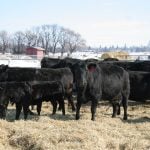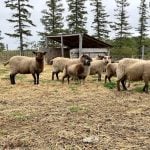Scouting for potential insect problems early in the year is important because plants are small and more vulnerable.
However, it can be a difficult job.
“In the spring, insects are smaller and often below the soil surface, where methods for determining population levels tend to be more labour intensive,” said Scott Hartley, Saskatchewan Agriculture’s provincial insect and vertebrate pest specialist.
“First on my list would be the wireworm. These insects can be persistent pests in Saskatchewan crops, due to the considerable time required for wireworm larva or click beetles – the adults – to complete their life cycle.”
Read Also

VIDEO: Ag in Motion documentary launches second season
The second season of the the Western Producer’s documentary series about Ag in Motion launched Oct. 8.
The young larvae are white, changing to yellowish and tan or brown with age. The larval bodies are more “leathery,” compared to the thinner skin of moth or butterfly larvae such as cutworms.
“Wireworms prefer cooler and moist soils and temperatures,” Hartley said. “They move up and down in the soil in response to temperature. They’re more destructive in the spring, when they are feeding near the soil surface and plants have less vegetative growth. They tend to be more abundant in lower, damper areas of a field. Damage usually consists of shredded plant tissue below the soil surface. Initially, this may show up as mortality to the main central leaves, but eventually it can kill the entire plant.”
The most accurate method to determine wireworm populations is to sieve soil samples, which is a time consuming process. The presence of wilted plants is often the first sign of a problem, but damage is often not noted early enough to reseed and can be misdiagnosed. The only viable control option is the use of a seed treatment the following year.
Cutworm is another problem pest. Reports of severe infestations have increased in the last few years, Hartley said.
Weedy areas are more prone to problems because adult moths look for green growth to lay their eggs, said Hartley. Hilltops and drier areas of the field also tend to have more cutworm problems.
Hartley said damage is typically in the form of a cut stem.
In spring cereals, three to four cutworms per sq. metre are considered to be the economic threshold.
Hartley recommended applying an insecticide to the soil surface in the evening. When cutworms come to feed at that time, they come in contact with the chemical. It can take up to 10 days for best results because not all larvae come to the surface on the same night. Some species, such as the glassy cutworm, do not surface and are less affected by insecticides.
Hartley also has news about flea beetles.
“Overall, flea beetle populations were lower last fall compared to previous years. This is the same generation that will be affecting canola and mustard this spring. If higher rates of seed treatments are used at seeding time, flea beetles are less likely to be a problem. However, if there is high flea beetle pressure and a low rate or no insecticide is used at seeding, monitoring is critical in case a foliar insecticide is required.”
The action threshold for initiating insecticide application is when 25 percent of the leaf tissue is eaten.
“Cool temperatures result in less flea beetle activity and slower plant growth,” Hartley said. “Therefore, the seedlings remain vulnerable for a longer period. In addition, the beetles remain closer to the ground surface and in cracks in the soil.”
When it comes to diamondback moths, Hartley said adult moths were collected in late April in a broad region of the Prairies. The cool weather may have reduced adult moth numbers, but it would still be prudent to monitor for larvae. Early season feeding on the growing point of canola or mustard will result in stunted growth or even plant death.
Adult moths continue to be found in significant numbers in some areas, suggesting there is the potential for egg-laying and serious infestations in coming weeks if weather conditions are more favourable.














